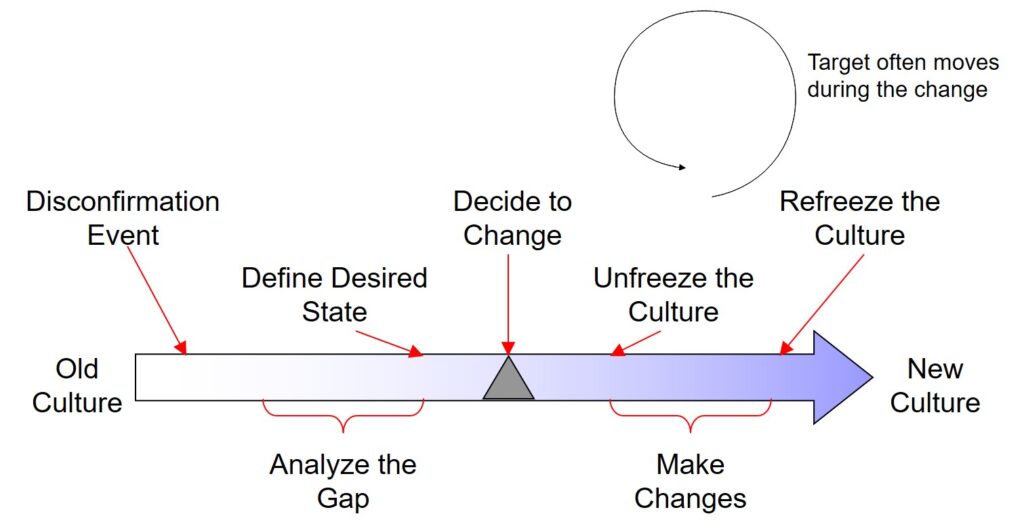Organizations are constantly confronted with the need to change. (I like W. Edwards Deming’s tongue in cheek comment about organizational change. He said, “It is not necessary to change. Survival is not mandatory.”) So let’s look at what change management experts say about changing an organization.
 First, some theory. The goal of an organization that is facing a change is to move from its old, broken culture or behaviors to new ones. Such an organization typically goes through a series of steps on its journey. The first is called disconfirmation. Disconfirmation is the uh-oh moment when sufficient people in the organization realize that doing things the old way is no longer viable.
First, some theory. The goal of an organization that is facing a change is to move from its old, broken culture or behaviors to new ones. Such an organization typically goes through a series of steps on its journey. The first is called disconfirmation. Disconfirmation is the uh-oh moment when sufficient people in the organization realize that doing things the old way is no longer viable.
This leads them to discuss where the organization needs to be in the future – the desired state – and the gap between the current situation and the desired state
Once the gap is understood and plans about how to cross it are made, the organization faces a decision point. Is achieving the future state worth the cost, pain and uncertainty of making the change?
If so, leaders announce the new destination and the start of the change. This gives permission to unfreeze the current culture and start making changes.
Making the actual changes is usually messy and iterative. To make matters worse, the target often shifts during the process, requiring the desired state to be redefined.
At some point the changes are good enough, and the culture can be refrozen, embedding the new methods and behaviors into the way the organization operates.
It’s a useful high level model, but as I’m sure you have experienced, the real life details are a lot more complicated and messy. And how do you equip people to navigate the steps in this model? I’ll tackle that in a future post.
What has been your experience with organizational change?